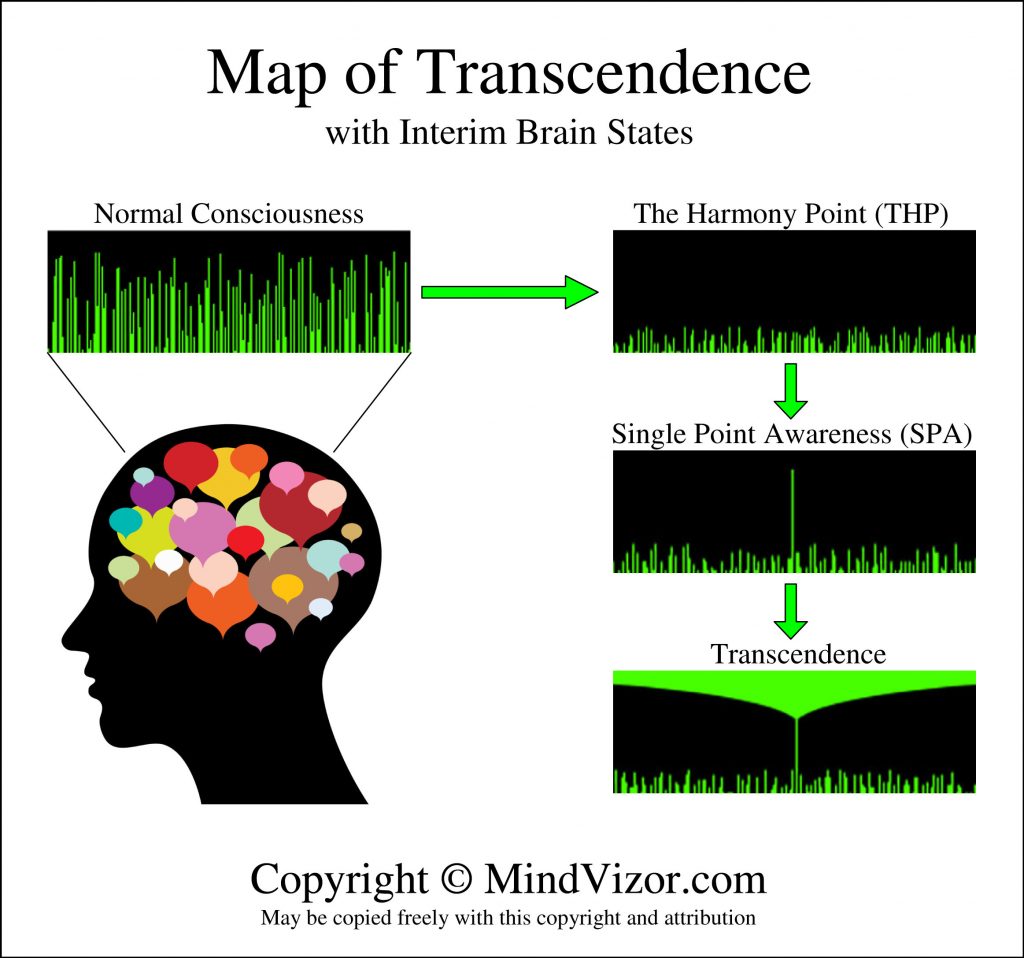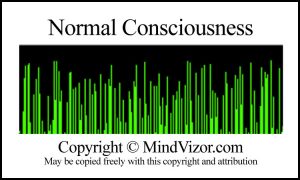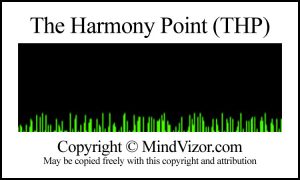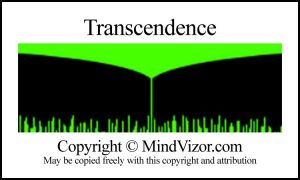Getting to The Harmony Point
After comparing many world traditions, from ancient to modern, spiritual to religious, mystical to scientific, we now have a simple map of consciousness with just two, interim destinations:
- The Harmony Point (THP) – where you are one with the universe (all attention seekers are quieted)
- Single Point Awareness (SPA) – where you are totally immersed in a single object of your attention (all attention seekers are quieted, except one).
Of these two targeted brain states, The Harmony Point is usually considered the ultimate destination, and the more powerful of the two. It’s also harder to reach directly, because you have to be able to control all of your attention seekers, across all realms of awareness (physical, mental, emotional, spiritual, etc.). That’s why many traditions begin with some version of Single Point Awareness …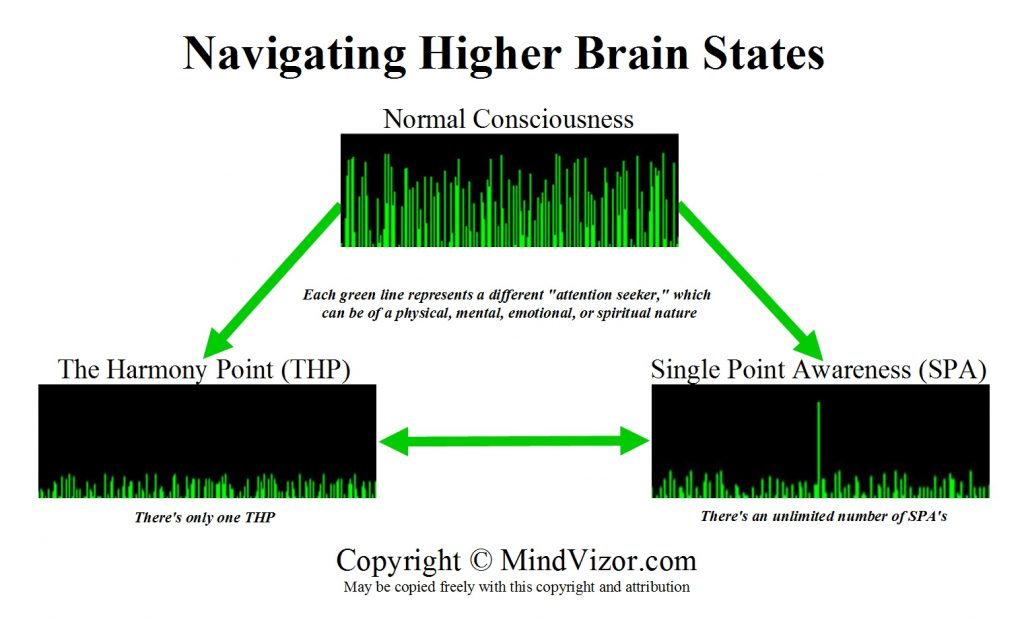 As you can see above, there really isn’t that much difference between THP and SPA. And once you get to one of these states, you can easily get to the other. Since it’s easier to focus on one attention seeker rather than quieting all them, many traditions start with low intensity SPA approaches.
As you can see above, there really isn’t that much difference between THP and SPA. And once you get to one of these states, you can easily get to the other. Since it’s easier to focus on one attention seeker rather than quieting all them, many traditions start with low intensity SPA approaches.
Transcendental Meditation is a good example of this. Focusing on something like a mantra quiets all of the other attention seekers, until your mind gets bored and stops focusing all together — leaving you at The Harmony Point.
Getting to THP Directly
Getting to The Harmony Point directly is harder, and traditions that pursue this often have elaborate rituals and indoctrination that can take a long time. An easier approach is to systematically use Single Point Awareness to “reset” each attention seeker …
Imagine that one of the green lines represents your breathing. Most of the time, that line is not very big. Unless you’re having difficulty breathing, it’s probably not even part of your normal awareness. But you can choose to become aware of it. You can choose to focus in on it to the exclusion of all others:
A Breathing Meditation
- Enter into a meditative position, and focus your attention on your breath. How quickly are you breathing? How deep are your breaths?
- Now focus on taking slower, deeper breaths. Long slow breath in, long slow breath out …
- Once this is comfortable, add expansive breathing (when you reach your natural limit for inhaling or exhaling, extend your breath just a bit further). Long slow breath in, breath in a little more, long slow breath out, breath out a little more ….
- Next, add rhythmic breathing (where the transition from inhaling to exhaling is continuous, the way babies breath) and/or other variations as desired.
- When you are done taking your breath through all of these motions, allow your breath to return to its natural state.
- Feel this, recognize this, remember this. This is now your new normal breathing.
You have just entered into Single Point Awareness with your breath, and become more aware of the normal range and optimal condition of your breathing. In effect, you have just focused in on one green line, stretched and compressed it, then allowed it to return to its natural position. You have just “reset” one attention seeker.
This simple meditation is a metaphor for taking control over all of your “awarenesses.” You see, this process of resetting works for all green lines — it works for all attention seekers. Next time, we’ll explore how to reset attention seekers by realm, starting with the physical, then mental, emotional, and spiritual.
Until then …
